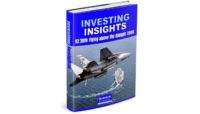You regularly book your car for a service and have a dental check up. You regularly optimise your tax and review your family’s health insurance. Yet how often do you check your super?
By independent financial planner Tim Mackay.
Super is (or one day will be) one of your largest assets yet do you allocate adequate time to growing and protecting it? With 30 June fast approaching, it’s time to check your super.
Which super fund are you with? Why?
If you hesitate answering, a super overhaul is required ASAP. An employer may have chosen your super fund long ago but things change. Start by reviewing your fund’s performance over the past one to five years.
Australia has around $18 billion in lost super – some of it may be yours. Google the ATO’s free website ‘SuperSeeker’ to find your ‘lost’ super accounts. If you have multiple funds, consolidate to reduce fees and complexity. Every little bit helps.
Maximise contributions now
Here are five timely tips to help maximise your super wealth:
Tip 1: 2011/12 is the last year that many aged 50+ can make a $50,000 concessional contribution (those aged 65 to 74 also need to meet the work test). For those aged under 50 the cap is $25,000. Under 65’s can also make non-concessional contributions up to $150,000 (or $450,000 ‘bring forward’ over three years; the work test applies to those aged 65 to 74).
Tip 2: Consider an in-specie share contributions to your SMSF. Contribute now to minimise transaction costs.
Tip 3: Turning either 55 or 60? These are great ages to review and optimise your concessionally taxed (or tax free) pension. Keep to the rules by withdrawing at least your minimum pension before 30 June.
Tip 4: Breaching contribution caps can result in 93 per cent (!) tax on your contributions. Identify and rectify any errors before year-end.
Tip 5: Review your salary sacrifice arrangements in early July to ensure you don’t inadvertently breach the new, reduced, $25,000 concessional cap.
Which fund?
If you have a corporate super fund, you may receive reduced fees or lower insurance premiums. Understand these benefits before considering changing super fund. If you and your spouse have at least $300,000 in super, consider combining it in an SMSF to maximise your wealth. Keen to invest in property? Definitely consider an SMSF.
Compare the pair – retail or industry fund? Industry funds are low cost funds run to profit members. Retail funds typically have higher fees, offer more services and are run at a profit. Fund returns (before fees) from both types are comparable.
Under the old sales-based system, tied advisors simply advised you into their firm’s associated retail fund or platform. This may be your legacy position today. While this may have been acceptable in the past, today discerning consumers demand advice that is in their best interests. If in doubt, or if you’d like a sanity check, send me an email and I’ll point you in the right direction.
Spread your investments
Sadly, many Australians don’t pay attention to their super until retirement looms and so are automatically invested in the default ‘balanced’ option. Balanced may be suitable for many, but it may not be right for you.
Check your latest super statement and ensure your asset class allocation is in line with your investment strategy. If it isn’t, rebalance your portfolio. Tailored asset allocation is an area where an independent advisor can add signifi cant value. It can be the biggest single determinant of your returns and hence how much you will have to support your lifestyle at retirement.
Insurance and beneficiaries
To better protect your family, consider holding life, TPD and income protection insurance in super. While it can be cost and cashflow effective, be aware of the tax consequences, coverage limitations and accessibility issues.
Make sure your super goes to who you want it to. You may have your spouse or children as your super beneficiaries. If your beneficiaries are mature age children they can be liable for more tax (exacerbated if life insurance is held in super). If you don’t know who your beneficiaries are, review it ASAP.
10 point check up
- Review current super fund
- Find ‘lost’ super
- Consolidate super
- Concessional contributions
- Personal contributions
- Review super fund type
- Review fees
- Review asset allocation
- Insurance in super
- Review beneficiaries
Remember, vigilance pays off. Your money (and subsequently your family’s welfare) are too important to be left to chance. Make the time to review your super. If everything’s as it should be, then great. If not, you’ll be glad you did.
_______________________

Tim Mackay BEc (Hons) MBA CA CFP SSA
I am an independent financial planner, SMSF expert and company director. I thrive on providing independent, expert financial advice to my wonderful clients. With international investment banking experience at Deutsche Bank and UBS in London and New York, I was recognised as SMSF Advisor of the Year by Independent Financial Advisor Magazine.
To contact me, speak to my team on 02 8084 0453. Please feel free to connect with me on LinkedIn or on Twitter. You can also visit the my colleague’s (and sisters) website.








Leave A Comment